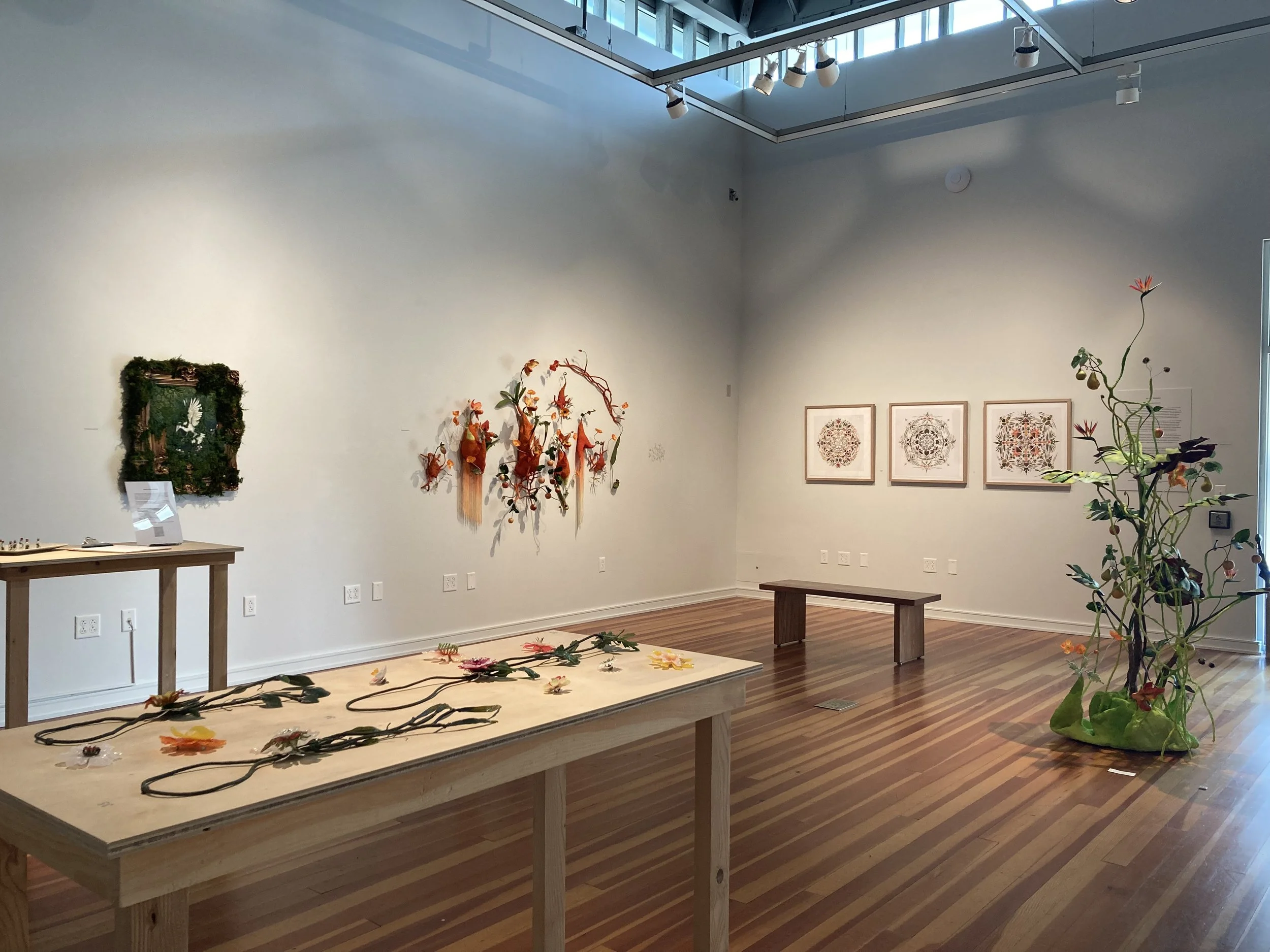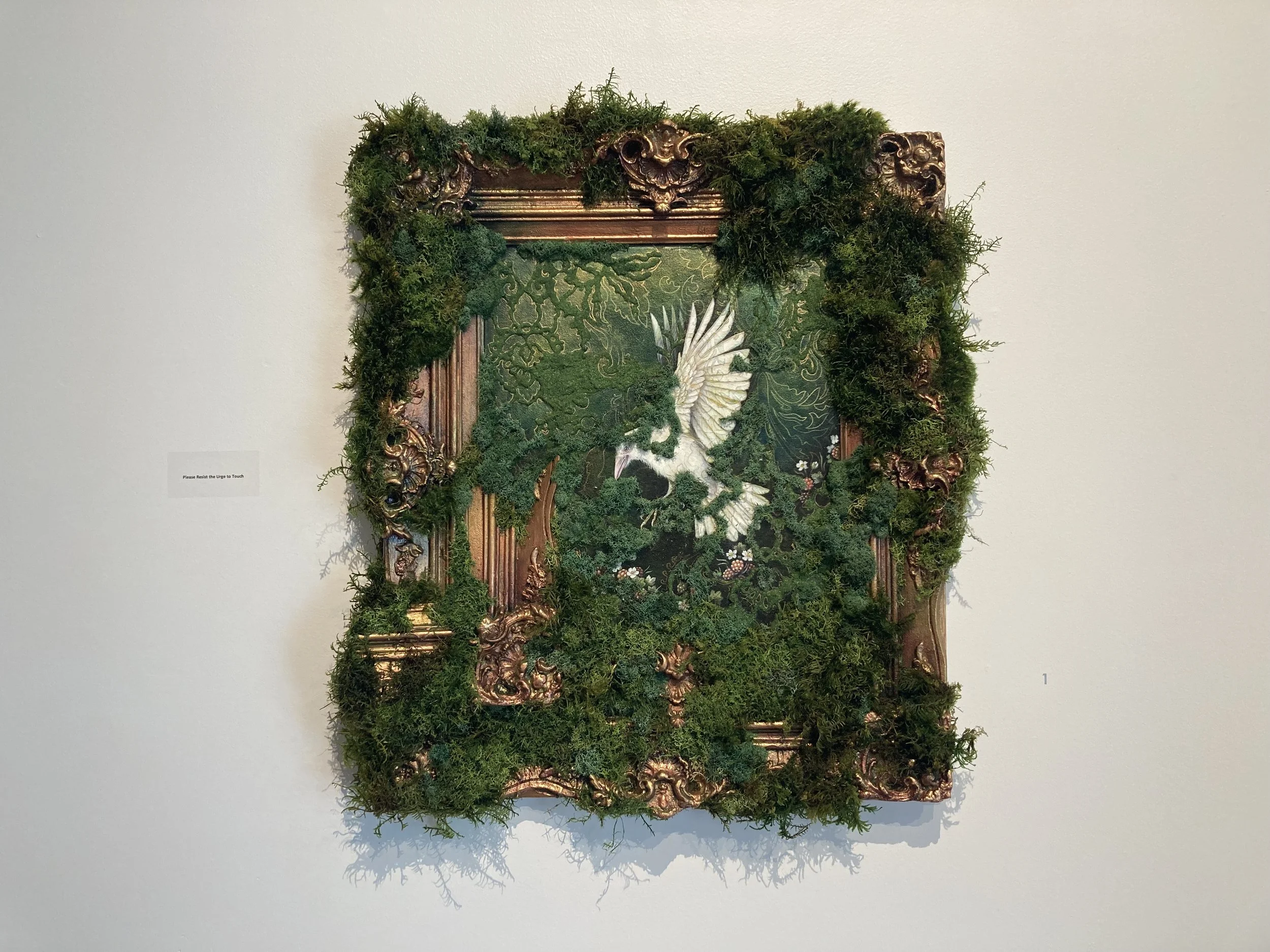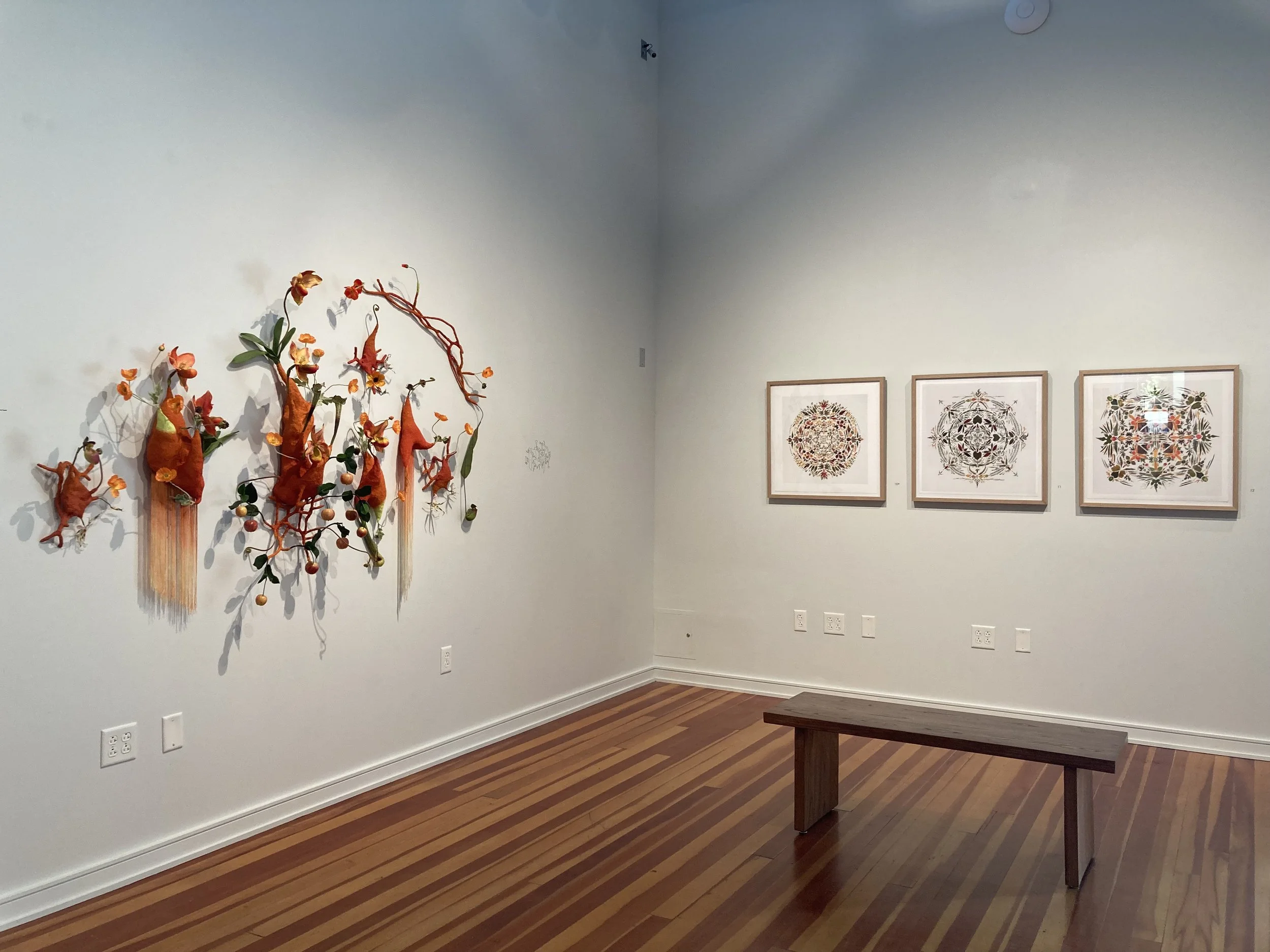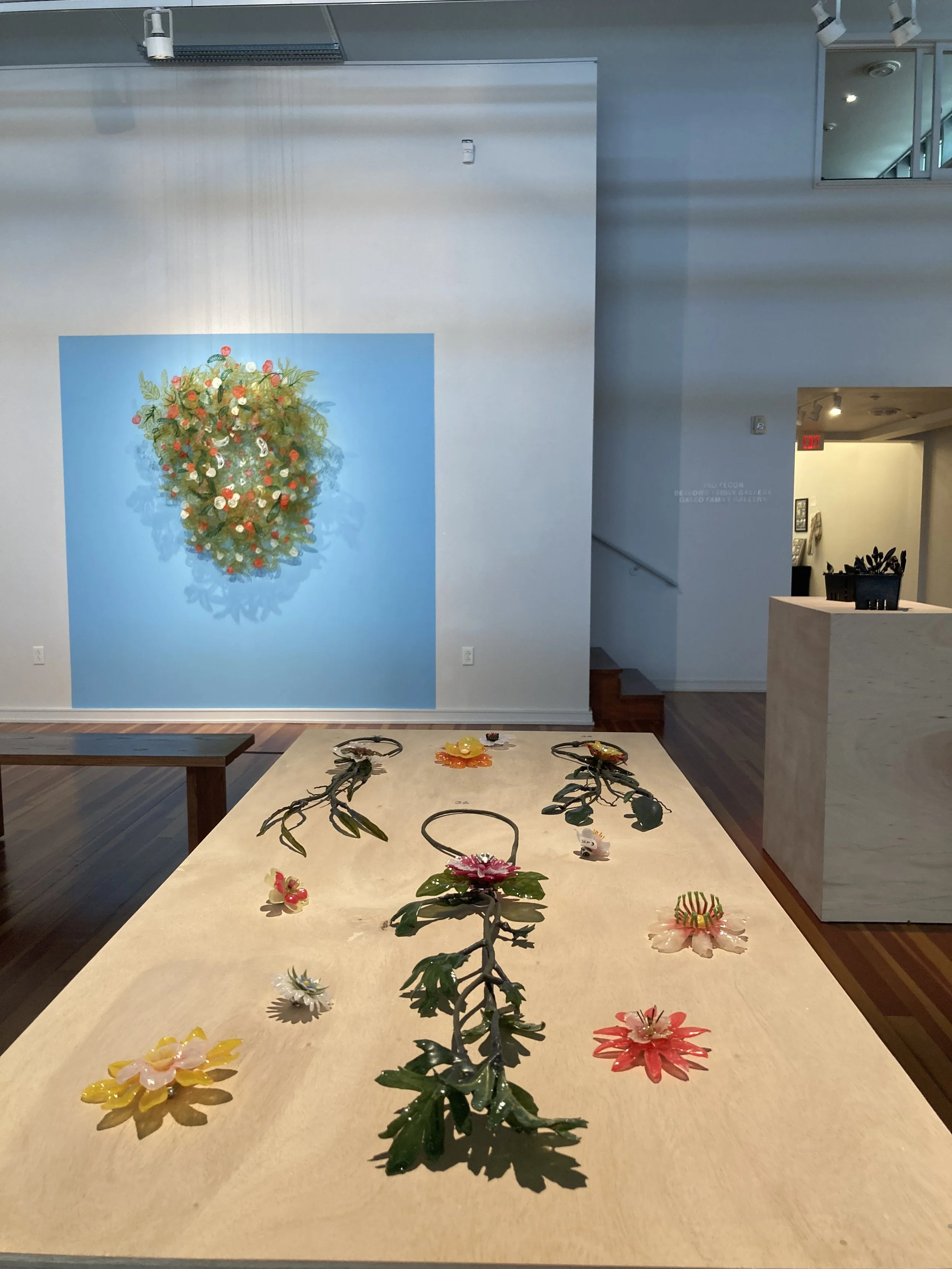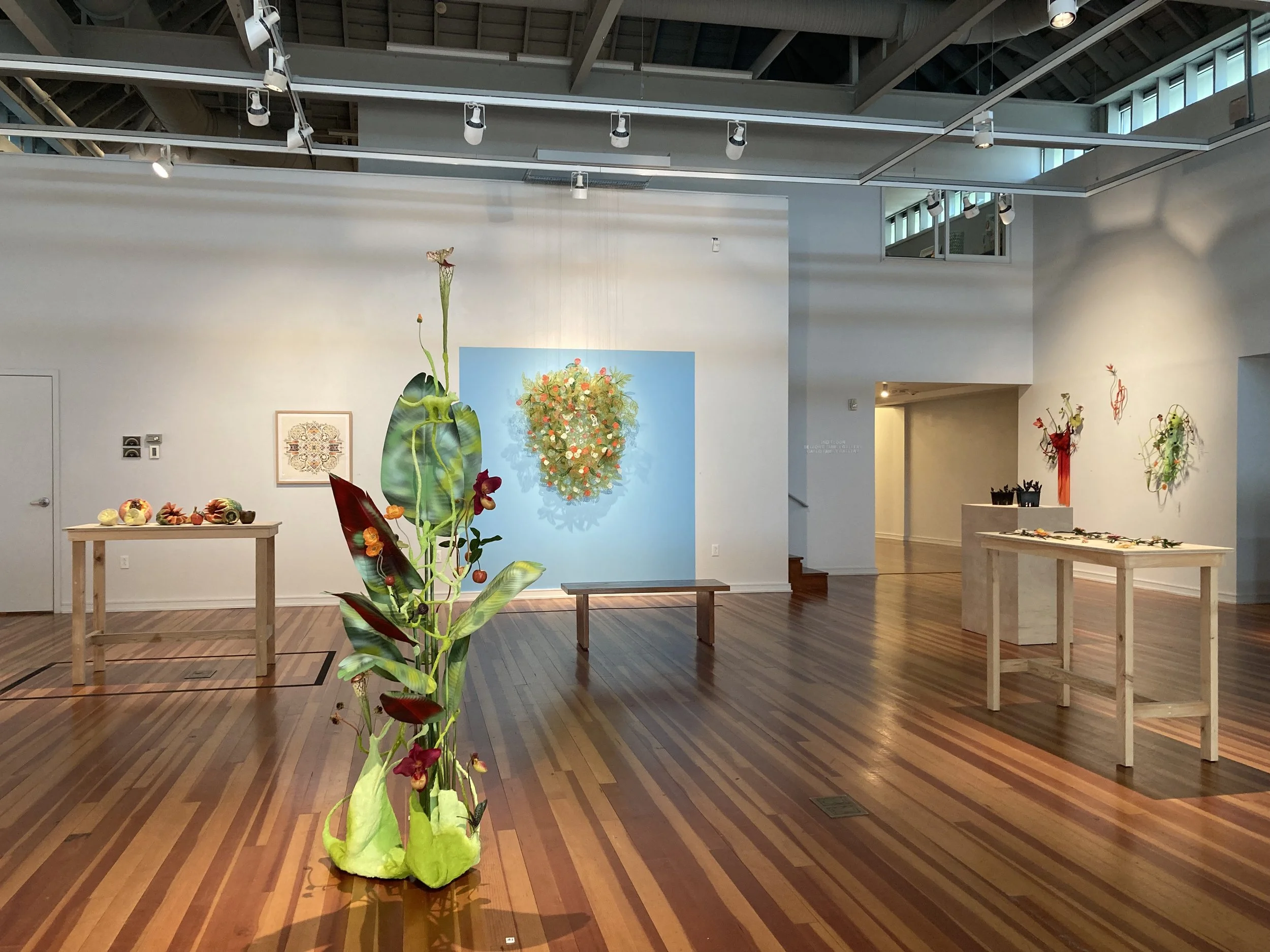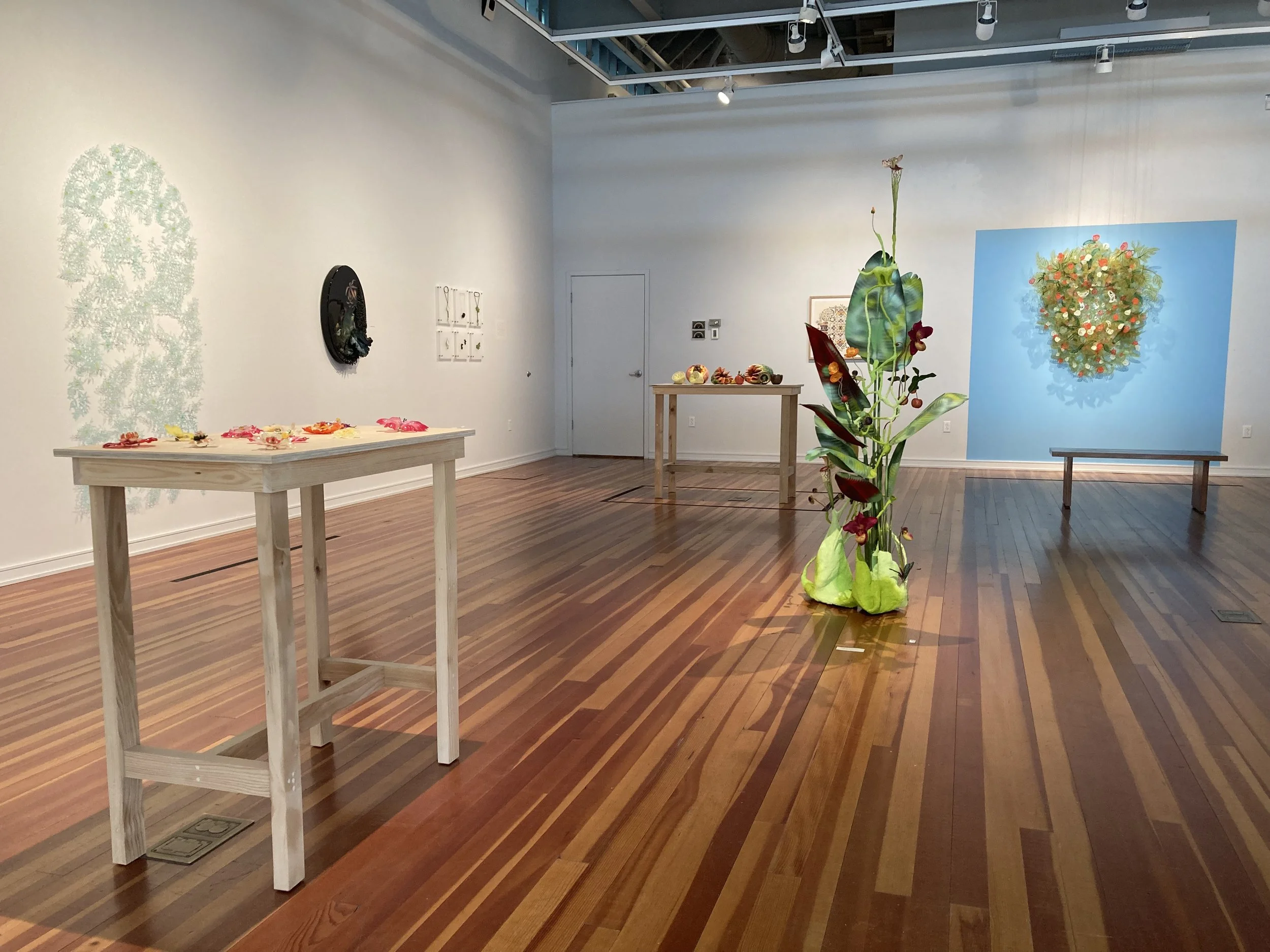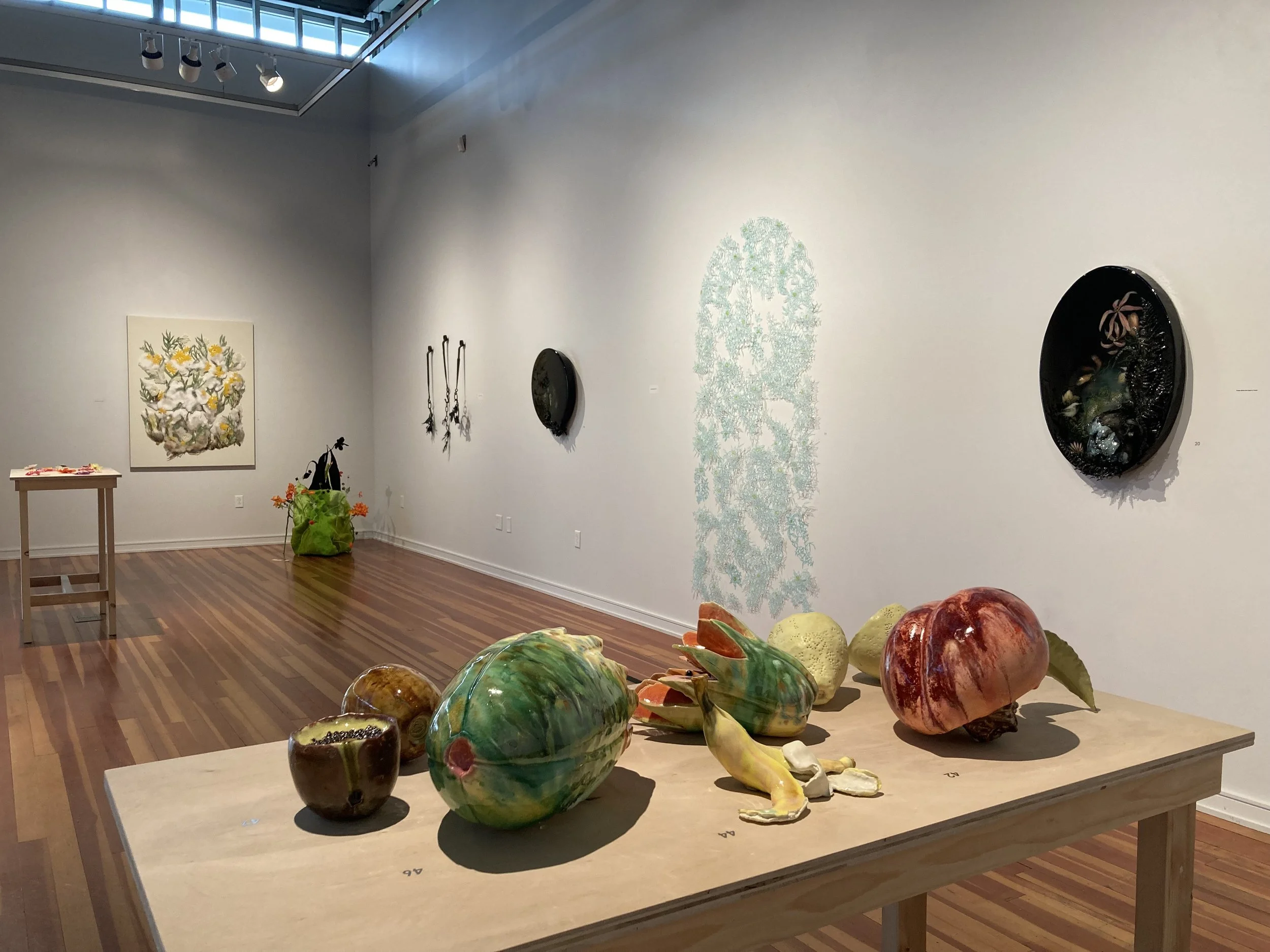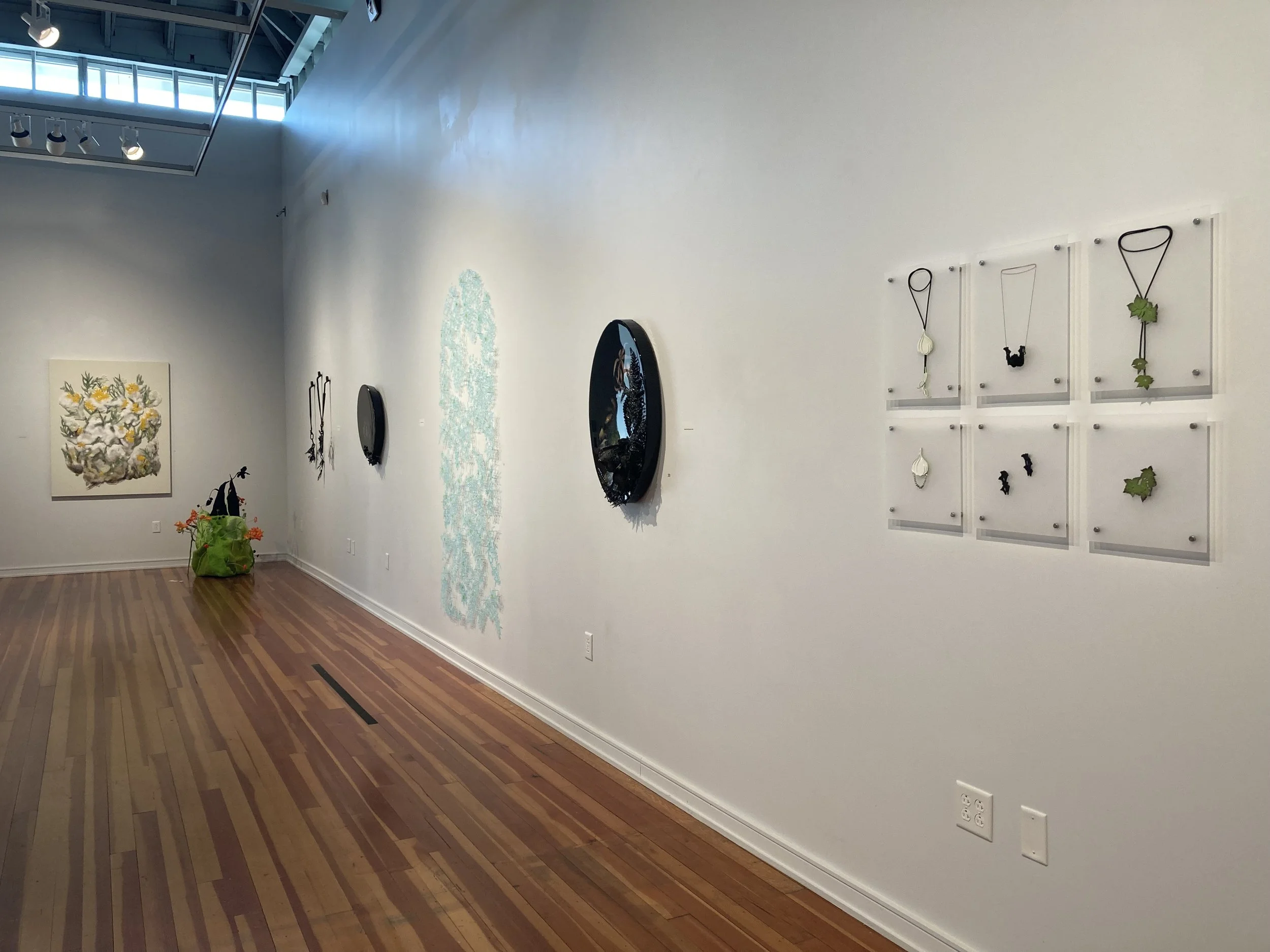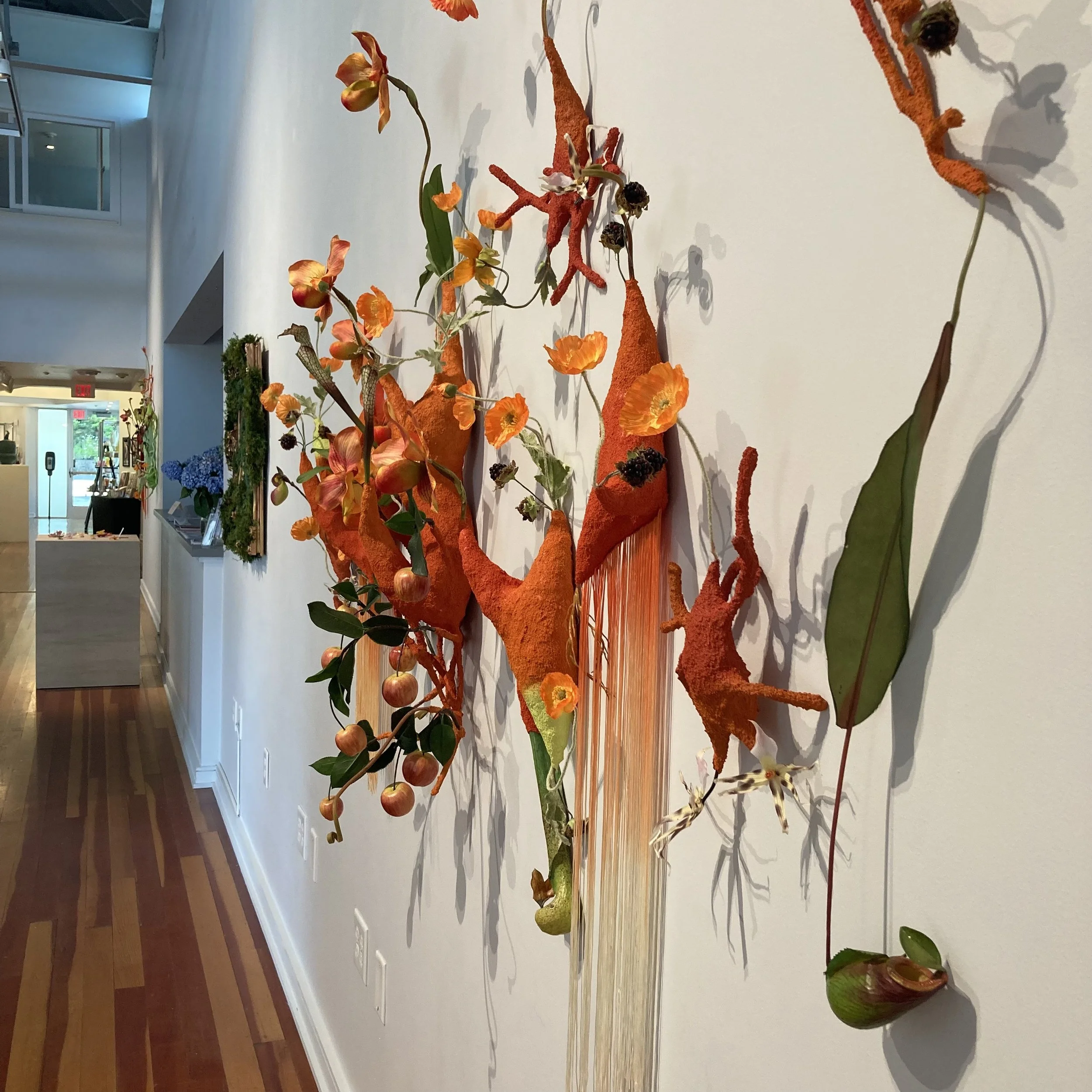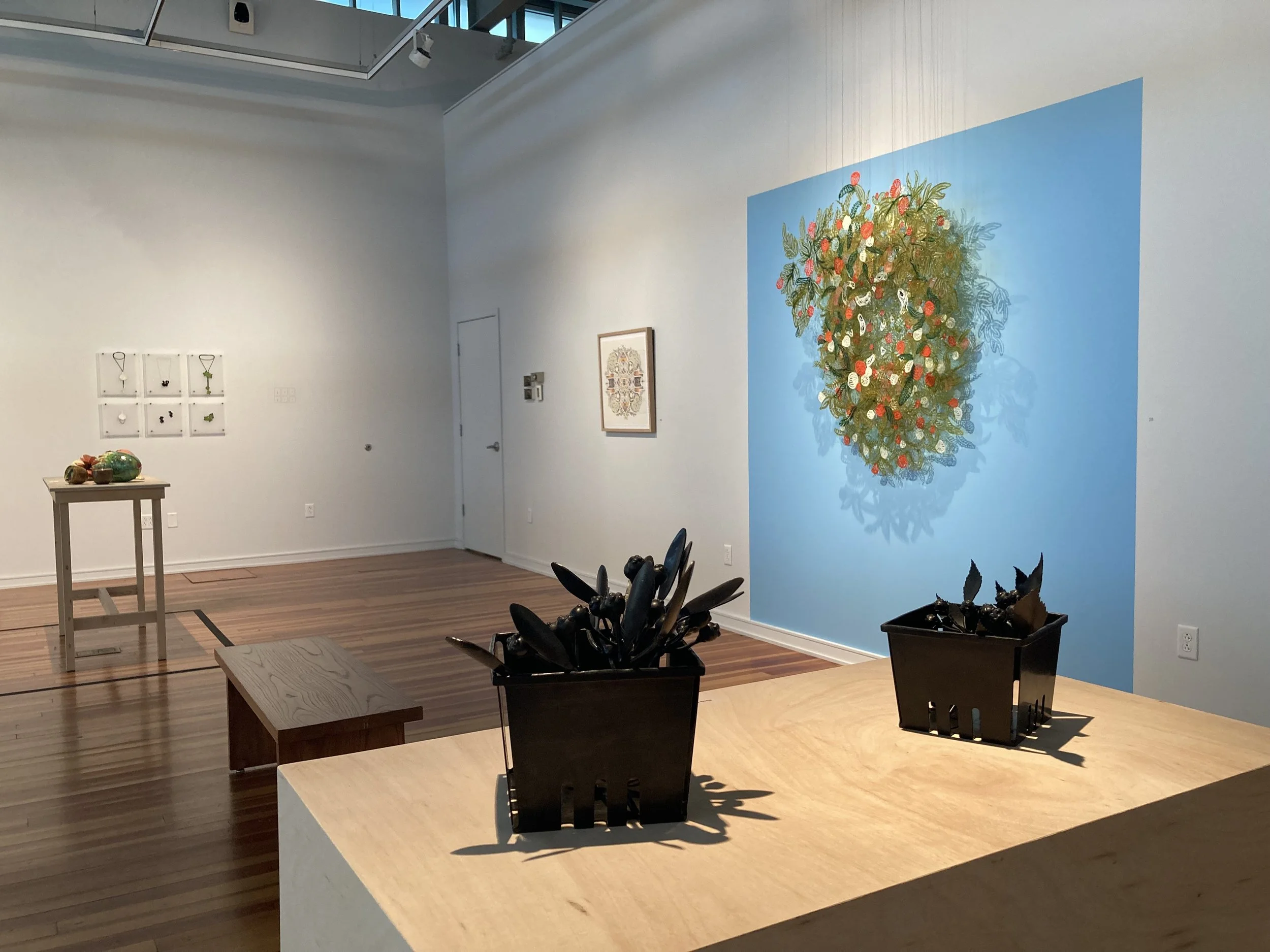Kate Clements
In the Garden
Strohl Art Center, Chautauqua Institution
July 24 - August 21, 2024
Inspired by what we learn from the garden, this exhibition reflects the complicated histories and often tenuous futures of flowers and food. It also digs at our relationship to them, as those charged with tending the garden. Through media ranging from still life painting to glass pâte de verre, these works tackle diverse subjects such as climate change, indigenous plant knowledge, growth/decay, and tulip mania. This exhibition and related programming are generously sponsored by the Kay Hardesty Logan Foundation. Curated by Erika Diamond.
ARTISTS: Julia Blume, Kate Clements, Hillary Waters Fayle, Brian Fleetwood, Ryan Michael Flores, Margaret Jacobs, Regan Rosburg
Take a Video Tour
Photos: Erika Diamond
Curatorial Statement:
When humans stayed indoors during the recent pandemic, Nature was given a chance to heal. As wildlife became less disturbed by the sounds, needs, and destruction of industry, we discovered significant reductions in climate and water pollution during this time. For those of us fortunate enough to have access to green spaces, many took up gardening – myself included. In the face of chaos, it felt purposeful not only to produce my own food but to care for the land around me and listen to all it had to say. Inspired by what we learn from the garden, this exhibition reflects the complicated histories and often tenuous futures of flowers and food.
Regan Rosburg envisions a world in which care is currency, offering the scent of rain in exchange for a letter of concern regarding the planet and our future on it. Her works using paint, found natural objects, and resin nod to the tradition of Vanitas still life paintings and are just as rife with allusions to both wealth and mortality. Referencing the same art historical canon, Ryan Michel Flores creates ceramic “fruits considered exotic during the colonial era.” Acknowledging decay as part of the process of growth, his slippery and colorful surfaces make the fruit simultaneously grotesque and beautiful, much like the fraught histories they represent.
Kate Clements creates delicate glass botanical compositions that explore the connections between wealth and beauty. Her portrayal of tulips, for instance, is a nod to Dutch “tulip mania” – a symbol of the conflated economic value of something as fleeting as flowers. Hillary Fayle lovingly stiches into rescued detritus from trees and plants. Her pressed floral arrangements are not merely ornate designs but a record of the places these florae inhabit. Both Clements and Fayle reflect the human tendency to impose order upon nature, while reminding us of its inherent impermanence.
Margaret Jacobs references botanicals that have medicinal, ceremonial, and cultural significance for her as an Akwesasne Mohawk blacksmith and jewelry artist. She melds them, quite literally, with found metal tools and hardware, creating hybrid objects that illustrate the symbiotic relationship between human and harvest. Julia Blume creates hybrid forms that interrogate the distinctions between natural and artificial and the increasingly thin line between them. They propose a correlation between concrete and skin, tuber and organ, or polyester fringe and hair. Similarly, Brian Fleetwood uses repurposed, dissected, and reconfigured artificial flowers in his recent jewelry work, which positions the body as ground or topography. Informed by his interest in biology and the floral beadwork motifs of his Mvskoke heritage, these resin-soaked objects speak to our desire to replicate and preserve that which intrinsically cannot be.
Inspired by the forms and histories of flowers and fruit, these artists tackle diverse subject matter such as climate change, indigenous agricultural knowledge, and the cycle of growth and decay. Their work helps us consider how our planting and pruning might better collaborate with the earth and sustain our communities. Each reflects on the stories being told…in the garden.
Read Julia Weber’s article in the Chautauquan Daily
Special thanks to Colin Shaffer, Rena Colletti, Lalia Riseng, and Silvia Ferrer for assistance in exhibition install.

